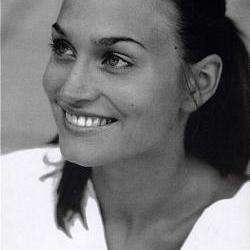Giuseppe Verdi’s Attila is not an opera that one hears often. Composed during his self-styled “galley period” – before he found his mature musical voice with Rigoletto – Attila has inherent musical and dramaturgical weaknesses. With one foot still firmly rooted in bel canto tradition, the numerous cabalettas can be exhausting, even ridiculous, considering the dramatic nature of the text. The choir scenes are generally up-tempo and almost cheerful, grotesque in the context of warfare and plundering. The second scene features a chorus of hermits (yes, you heard me right: hermits apparently come in groups in Verdi operas), and the end of the entire work is shockingly abrupt. That being said, there are some gorgeous musical moments. The trio in the third act between Ezio, Odabella and Foresto foreshadows Verdi’s compositional brilliance. Memorable dramatic arias such as Attila’s “Mentre gonfiarsi l’anima parea” and Ezio’s “E gettata la mia sorte” also make one question why the music is so rarely performed.
At the end of the day, the choices of director Peter Konwitschny will dominate the discussion about this Theater an der Wien production with the RSO Wien conducted by Riccardo Frizza. Konwitschny took some of the opera’s inherent absurdity and made it grotesquely comical in a manner that will certainly divide opinion sharply. The opening chorus scene, set in Attila’s camp, featured victorious Huns (dressed like a cross between Peter Pan’s “lost boys” and the creatures from Where the Wild Things Are), banging on pots and pans with kitchen utensils and emulating children’s play. Ezio is coiffed as a punk with a red, white and green sash, and plays war games with Attila. At the end of the first act, the child-like Huns are forced into adult suits (Odabella even gets to wear Chanel), but still play gruesome games of Russian roulette (where dead girls keep singing until it’s time to stand up to dance around in wheelchairs). By Act III, Attila is a blind old man who gets beaten to death by his wheezing octogenarian antagonists as the battle rages on in the background.
Putting all questions of taste in direction aside, the cast alone is worth showing up for. While bass Dmitry Belosselskiy (Attila) is no Samuel Ramey, he has a beautiful, rich sound and wonderful vocal refinement. Baritone George Petean (Ezio) was a dramatic presence, tending to spread and push a bit in the upper registers but performing strongly. Soprano Lucrecia Garcia (Odabella) has a color and metal to her tone reminiscent of a young Leontyne Price, and a voice that defies gravity and can cut through reinforced steel. At times she wasn’t quite in control of every aspect of her instrument, but it is a thing of beauty well worth checking out. Tenor Nikolai Schukoff (Foresto) was singing sick, and is someone I would love to hear again when he’s not holding back for vocal reasons. Bass Stefan Cerny was solid and sovereign in his cameo as Pope Leone, who halts Atilla’s rampage, forcing him – in this production – to stop his childhood nonsense and enter adulthood.
Is this one of Verdi’s strongest works musically? No. Are there amazing moments? Yes. Will you like this production if you love classical staging and want direction that underscores the work as Verdi envisioned it? You will not. Is Konwitschny a genius whose direction provokes thought, emotion and discussion? Yes, I believe he is. It’s rare to leave the theatre and mull over a truly stirring experience for hours. Love it or hate it, Attila at Theater an der Wien will not leave you bored or indifferent.


